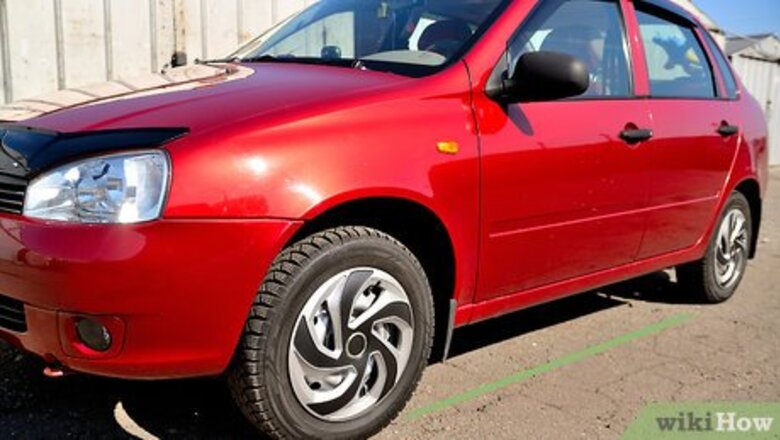
views
Park the car on a hard, flat surface.
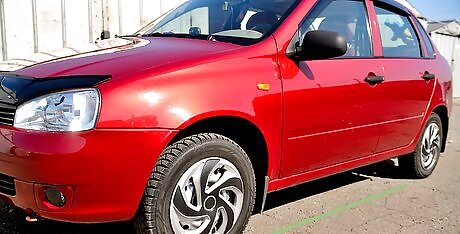
Always work on a level surface away from moving vehicles to prevent your car from rolling or slipping off the jack. If you’re unable to find one, consider calling a tow service instead. If you’re working near traffic, use cones, reflective hazard triangles, your hazard lights, or flares for extra safety. If you must jack the car on a soft or broken surface such as a dirt shoulder, use a thick, flat piece of wood to make a stable platform for the jack. If you must jack the car on a slight incline, park next to the curb and turn the wheels into the curb so that they are touching it. This will prevent an out-of-control car from hurting others if it slips off the jack. Similarly, if you don't have anything to block the wheels with, turn the tires into the curb.
Place chocks or other barriers under the wheels.
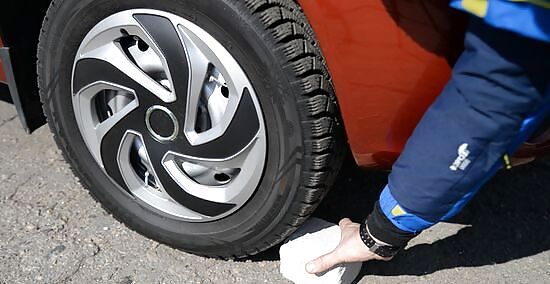
Chocks are wedge-shaped blocks made from metal and rubber that keep the wheels from rolling. Set a chock on either side of each wheel at the opposite side of the car from where you intend to lift. If you don't have chocks, use bricks, cinder blocks, large rocks, or wedge-shaped pieces of wood. Also, double-check that your car is in park. Set the parking brake, and if the car has a manual transmission, put it in the lowest forward gear.
Find the jack points using the owner’s manual.
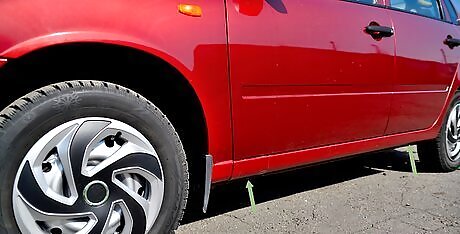
Most vehicles have several reinforced points along the body where the vehicle is designed to be lifted. If you lift somewhere else, the car's own weight may cause injury to yourself or damage to the frame. Luckily, the owner's manual will almost always tell you where a car's jack points are. Typically, there’s a jack point behind either front wheel and in front of either back wheel. This will often be next to the rocker panels (the metal or plastic strips beneath the doors). Sometimes, there are two more central jack points located just behind the front and rear bumpers. If you're not sure where the jack points are, look for a flat metal area along the weld running down the side of the car beneath the doors. There may also be a notch that matches the shape of the top of the jack, a cutout in the plastic skirt that exposes metal, or a sturdy plastic block attached to the frame. There may even be a spot labeled "jack" on the undercarriage.
Position the jack under the jack point.
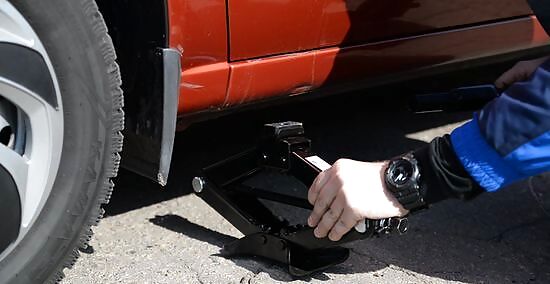
Make sure the correct side is facing up. If the jack itself isn't labeled with a "this side up" warning, look in your jack’s user manual for visual instructions. Typically, the jack has a wide, flat base and a smaller upward-facing arm with "teeth" at the edges pointing up into the body of the car.
Raise the jack so that it touches the car.
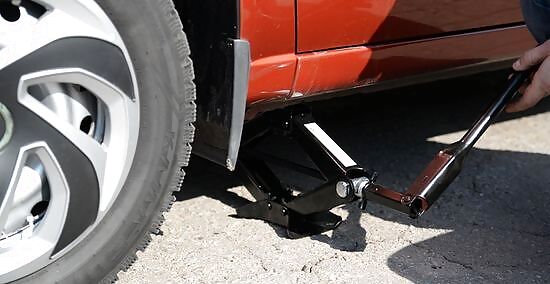
Each jack type has different operating methods (described below). As the upper arm of the jack nears the underside of the car, make last-minute adjustments as needed so that it lines up with the jack point. Scissor Jacks: These are 2 horizontal metal plates with a diamond-shaped mechanism in between. Insert the handle through the hole connected to the main screw drive and turn it clockwise to pull the sides of the jack inward and expand the jack. Hydraulic Jacks: Also called bottle or floor jacks. Insert the jacking rod into the slot on one side of the base. Crank the rod up and down in long, steady strokes to pump hydraulic fluid into the cylinder and raise the jack.
Use the jack handle to lift the car 3–6 in (7.6–15.2 cm).
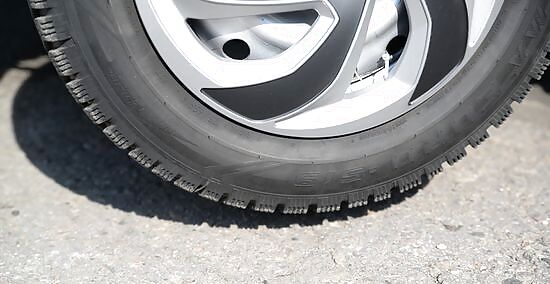
Keep working the jack upward until the nearest wheel leaves the grounds. Stop when the car has enough clearance for you to do your work. For common tasks like changing a tire, just 3–6 in (7.6–15.2 cm) is all that's necessary. Pay careful attention to any sound or movement while lifting the car. It’s common to hear a “pop” or a “thud” as the jack shifts slightly. If this happens, check that it hasn't slipped out of position before continuing. Keep all parts of your body out from under the car at all times while lifting it. Though unlikely, serious injury or death can result if the car slips off the jack after this point. When the jack makes contact with the underside of the car, it will become harder to raise. Keep at it!
Put a jack stand under the car to work beneath it.

Work that requires you to put any part of your body under the car requires a jack stand. Place the jack stand beside the jack and raise it with the pin or screw until it touches the jack point. Lower the jack slowly and carefully until the jack stand "catches" the car. It is unsafe to work under the car without jack stands. Jack stands provide more stable and reliable support for a lifted car. Ensure that the stand, like the jack, is beneath a jack point or pinch weld of your car. Use multiple jack stands for added stability, or when lifting the front or rear of the car. If you are not working under the car (for instance, if you’re changing a tire), you may proceed without jack stands. Take care not to put any part of your body underneath the car as you work. Give the car a gentle push to ensure it’s stable.
Lower the car back down when you're finished.
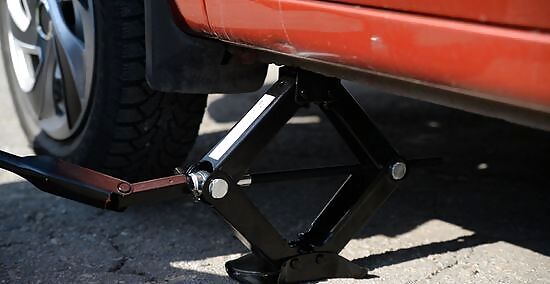
At this point, you are ready to do whatever work you need to do on your car. When you’re done, gradually lower the car back to the ground and remove the jack. Scissor Jacks: Slip the rod into the screw drive hole and turn in the opposite direction as you did to raise the car—counterclockwise. Hydraulic Jacks: Open the relief valve to let fluid drain from the hydraulic cylinder, which lowers the arm. The valve is usually a small screw keyed to the lever. Take care to open the valve slowly to avoid suddenly dropping the car. If you’re using jack stands, first raise the car off of the stands, remove the stands, and finally lower the car.














Comments
0 comment